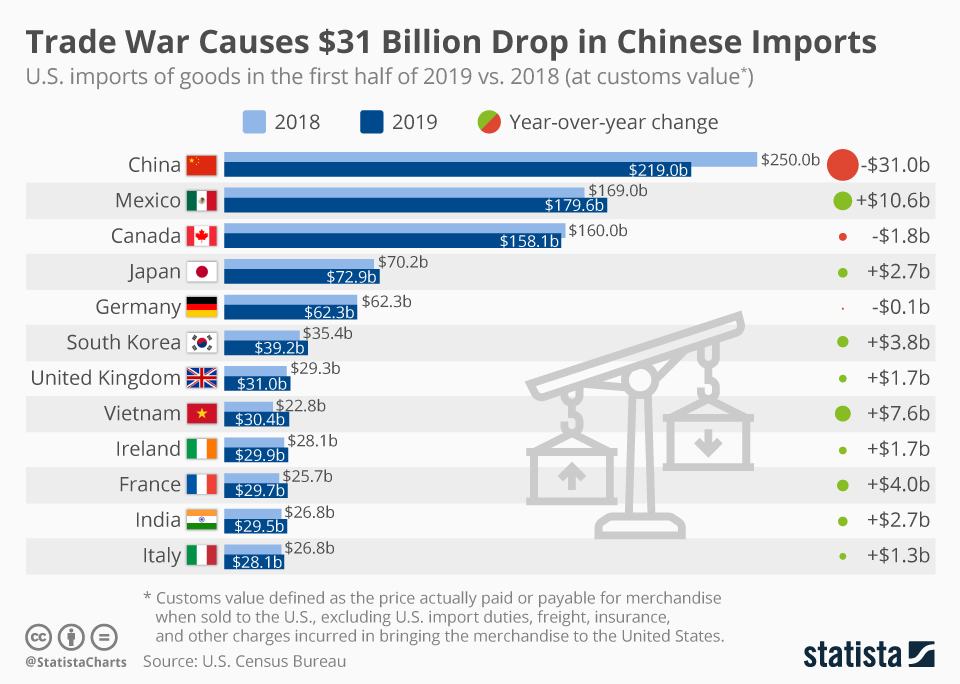India's Trade Policy Shift: Impact On Imports From Bangladesh

Table of Contents
Increased Tariffs and Non-Tariff Barriers
India's revised trade policy has introduced increased tariffs and non-tariff barriers, creating significant hurdles for Bangladeshi exporters. This section examines the specific impacts across various sectors.
Impact on Ready-Made Garments (RMG)
Bangladesh's Ready-Made Garment (RMG) sector, a cornerstone of its economy, has been significantly affected by India's trade policy shift.
- Increased duties on specific textile items: Higher tariffs on certain fabrics and materials have increased production costs for Bangladeshi RMG manufacturers, making their products less competitive in the Indian market.
- Impact on competitiveness with other RMG exporters (e.g., Vietnam): The increased tariffs have shifted the competitive advantage towards other RMG exporting nations like Vietnam, which may enjoy preferential trade agreements with India.
- Potential job losses in Bangladesh's RMG industry: The reduced competitiveness could lead to decreased orders and potential job losses within Bangladesh's vital RMG sector, impacting its economic growth.
- Countermeasures taken by Bangladesh: Bangladesh is exploring various countermeasures, including seeking bilateral negotiations with India to address the tariff barriers and exploring new export markets to mitigate the impact.
Non-Tariff Barriers and Their Influence
Beyond tariffs, non-tariff barriers pose significant challenges for Bangladeshi exporters.
- Examples of specific non-tariff barriers: These include stricter quality standards, complex and time-consuming customs procedures, and stringent sanitary and phytosanitary (SPS) regulations.
- Their impact on import timelines and costs: Navigating these barriers adds significant time and cost to the import process, reducing the profitability of Bangladeshi exports to India.
- The bureaucratic hurdles faced by Bangladeshi exporters: The complexities of complying with India's non-tariff barriers create significant bureaucratic hurdles for Bangladeshi businesses, requiring substantial resources and expertise.
India's Focus on Domestic Manufacturing and "Atmanirbhar Bharat"
India's "Atmanirbhar Bharat" (Self-Reliant India) initiative aims to boost domestic manufacturing and reduce reliance on imports. This has significant implications for Bangladeshi exporters.
The "Atmanirbhar Bharat" Initiative and its Implications
The "Atmanirbhar Bharat" initiative involves substantial government support for domestic industries through subsidies, tax breaks, and infrastructure development.
- Government support for domestic industries: This creates a more competitive environment for Indian manufacturers, potentially displacing Bangladeshi imports.
- Increased competition for Bangladeshi goods in the Indian market: The increased competitiveness of domestically produced goods directly impacts the market share available to Bangladeshi products.
- Potential for substitution of imports with domestically produced goods: India's focus on self-reliance could lead to a significant substitution of imported goods with domestically manufactured alternatives.
Impact on Specific Bangladeshi Export Sectors
The impact extends beyond the RMG sector. Other Bangladeshi export sectors are also feeling the pressure.
- Specific examples of affected sectors: This includes agricultural products (e.g., rice, jute), pharmaceuticals, and various other manufactured goods.
- Analysis of import substitution efforts by India: India's efforts to replace imports with domestically produced goods are actively reducing the demand for Bangladeshi products in several sectors.
- Opportunities for diversification by Bangladeshi exporters: To mitigate the impact, Bangladeshi exporters need to explore diversification strategies, focusing on niche markets and higher-value products.
Regional Trade Agreements and Bilateral Negotiations
Existing and potential trade agreements play a crucial role in shaping the trade relationship between India and Bangladesh.
The Role of Existing Trade Agreements
Several trade agreements are in place between India and Bangladesh, but their impact is varied.
- Areas where agreements have been beneficial: Some areas have seen positive outcomes due to existing agreements, facilitating smoother trade in specific sectors.
- Areas where agreements have limitations: However, these agreements often have limitations, failing to fully address the challenges posed by India's recent trade policy changes.
- Potential for renegotiation or expansion of existing trade agreements: Renegotiating or expanding these agreements could offer a pathway to address the negative impacts on Bangladeshi imports.
Potential for Future Bilateral Trade Agreements
Negotiating new or revised bilateral trade agreements offers a crucial opportunity for both countries.
- Areas for potential collaboration: Areas for potential collaboration include identifying sectors for mutual benefit, streamlining customs procedures, and establishing clear and transparent regulations.
- Strategies for negotiating favorable terms for Bangladesh: Bangladesh needs effective strategies to negotiate favorable terms that address its specific concerns and promote balanced trade.
- Opportunities for mutual benefit: Despite the challenges, there are significant opportunities for mutual benefit through enhanced trade cooperation and the creation of a more equitable and sustainable trading relationship.
Conclusion
India's trade policy shift has presented both challenges and opportunities for Bangladeshi imports. Increased tariffs and non-tariff barriers, coupled with India's "Atmanirbhar Bharat" initiative, have created a more challenging environment for Bangladeshi exporters. However, opportunities exist through renegotiating existing trade agreements, exploring diversification strategies, and focusing on niche markets. The impact of India's trade policies on the future of trade between India and Bangladesh requires careful consideration and proactive measures from both nations.
To gain a deeper understanding of this dynamic relationship, we encourage further research into specific government reports, trade data, and relevant news articles. Exploring the impact of India's trade policies, analyzing India-Bangladesh trade relations, and considering the future of trade between India and Bangladesh are crucial for navigating this evolving landscape. Understanding the complexities of this relationship is vital for both countries to ensure a sustainable and mutually beneficial trading partnership.

Featured Posts
-
 Eurovision 2024 Pargs Armenian Version Of Survivor
May 19, 2025
Eurovision 2024 Pargs Armenian Version Of Survivor
May 19, 2025 -
 Increased Earnings For Uber Kenya Drivers And Couriers Alongside Customer Cashback Offers
May 19, 2025
Increased Earnings For Uber Kenya Drivers And Couriers Alongside Customer Cashback Offers
May 19, 2025 -
 Nyt Mini Crossword Answers March 3 2025 Complete Solutions
May 19, 2025
Nyt Mini Crossword Answers March 3 2025 Complete Solutions
May 19, 2025 -
 Impugnacion De Correismo Prohibicion De Celulares En La Segunda Vuelta
May 19, 2025
Impugnacion De Correismo Prohibicion De Celulares En La Segunda Vuelta
May 19, 2025 -
 Fbi Confirms Likely Death Of Fertility Clinic Bombing Suspect
May 19, 2025
Fbi Confirms Likely Death Of Fertility Clinic Bombing Suspect
May 19, 2025
